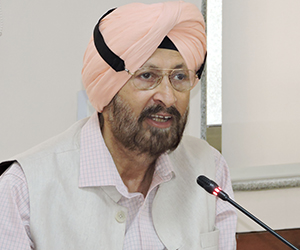While India’s interim defence budget for the financial year (FY) 2014-15 has remained stagnant in terms of the Rupee-Dollar exchange rate and inflation, the People’s Liberation Army (PLA) of China has been given a 12.2 per cent increase over the previous year in planned defence expenditure to US$ 131.57 billion (Yuan 808.23 billion).
China’s annual defence expenditure has been growing at double digit rates over the last decade. The latest hike is a clear signal from the new regime led by Xi Jinping and Li Keqiang that China will continue its strident march towards becoming the pre-eminent military power in Asia and that its military assertiveness will continue while dealing with territorial disputes.

Premier Li Keqiang told the National People’s Congress, the government would "strengthen research on national defence and the development of new- and high-technology weapons and equipment" and "enhance border, coastal and air defences... We will comprehensively enhance the revolutionary nature of the Chinese armed forces, further modernise them and upgrade their performance, and continue to raise their deterrence and combat capabilities in the information age."
Chinese analysts often seek to justify the steep annual hikes in the defence outlay as having been “caused by the sharp increase in the wages, living expenses and pensions of 2.3 million PLA officers, civilian personnel, soldiers and army retirees.” However, defence analysts look at the spectacular anti-satellite test successfully conducted by China in January 2007, pictures of an aircraft carrier – the Liaoning – undergoing sea trials, the acquisition of SU-30 fighter-bombers and air-to-air refuelling capability, the development of anti-ship ballistic missiles and a growing footprint in the South China and East China Seas, and cannot help wonder whether a 21st century arms race has well and truly begun.
In the 2004 and 2006 White Papers on National Defence, the Chinese government had stated that additional funds were needed for modernisation of the PLA. The allocation of additional funds for force re-structuring and a qualitative increase in the levels of training is emphasised in both the White Papers, as also rising inflation as a cause of increased defence expenditure. However, nothing in the recent White Papers fully explains the double-digit inflation-adjusted growth in the annual defence expenditure. It is this lack of transparency that has fuelled speculation about an arms race.
Complete transparency in defence spending has seldom been a strong point even among countries that take pride in being liberal democracies. According to the late Air Cmde Jasjit Singh: “All countries try and protect what they consider to be crucial information about their defence capability for understandable reasons; and defence expenditures are obviously part of that information except where democratic states practice greater transparency as part of their liberal ethos, domestic obligations and public oversight, and well established procedures of accountability...” Totalitarian regimes like the one in China lack egalitarian accounting practices and do not have a real grip on all the details of what they actually spend.
China’s actual military expenditure is far higher than the officially published figure. This year it is expected to cross US$ 200 billion. David Shambaugh, a well-known China analyst, finds China’s defence budget the most difficult aspect of the country’s armed forces to research. In his view, “Few areas of China’s military affairs are more opaque and difficult to research than the revenue/ expenditure and budget/ finance domains – but perhaps none is more important to understand.” In response to international calls for greater openness, one Chinese military official wrote: “Transparency is a tool of the strong to be used against the weak.”
David Shambaugh lists several items of expenditure that do not figure in China’s official defence expenditure (ODE): “China’s official defence budget does not appear to include all funds for (1) Chinese-made weapons and equipment production (as distinct from procurement); (2) some RDT&E costs; (3) the paramilitary People’s Armed Police; (4) funds for special large weapons purchases from abroad; (5) funds directly allocated to military factories under the control of the GAD and funds for defence industry conversion; and (6) military aid.”
Ted Galen Carpenter and Justin Logan point out that greater transparency would be in China’s interest: “China needs to recognize that it gains little from opacity in comparison to what it loses… Any respectable observer of the People's Liberation Army knows about China's growing capabilities. We know about the Sovremenny destroyers, the Sunburn missiles and the Kilo submarines. We know about the Sukhoi 30s and the new F-10 fighter. Large-scale hardware acquisition and development is hard to hide.”
On certain parameters, China’s defence expenditure compares favourably with the other major powers. China’s ODE overtook that of Japan ($42 billion) and Germany ($37.5 billion) in 2007, but still lagged behind the United Kingdom ($62.38 billion) and France ($50.78 billion) whose economies are now much smaller than that of China. It is still a small fraction – less than one-fourth – of the United States' annual defence budget of $575.00 billion; not counting the supplementary grants of about US$ 75 to 80 billion sought by the Pentagon separately every year for the ongoing war (s). The United States spends almost half – 48 per cent – of the total defence budget of the world. China, France, Japan and the United Kingdom each spend four to five per cent of the world’s total defence expenditure.
Published Date: 1st April 2014, Image source: http://i.telegraph.co.uk










Post new comment